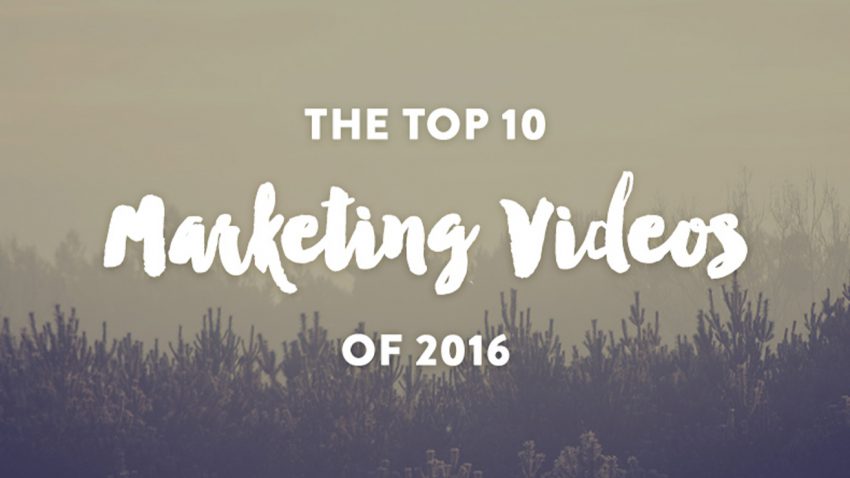What comes to mind when you read “baby boomers”? Is it a gray-haired grandmother baking cookies? A tech entrepreneur launching his second career? An empty-nester couple embarking on an around-the world adventure?
Born between 1946 and 1964, baby boomers can be a hard group to nail down; the fact of the matter is they can have any or even all of these characteristics. Sure, they may spend one Sunday afternoon helping little Susie put the finishing touches on her sugar cookies but you’re just as likely to find them exploring the world the next day. The worst thing any marketer can do is assume there is a one-size-fits-all approach to this diverse group of people. That said, there are some common factors to consider when planning your video marketing campaigns.
Why Baby Boomers?
For starters, the 50+ generation is economically powerful. Having worked for the past several decades, they’ve had time to increase their earnings, save, and see their investments grow. Even better, they’re willing to spend this money, both on themselves and on others (ie family). In addition to money, many baby boomers have more time on their hands than ever before thanks to retirement and/or becoming empty-nesters; this fact lends itself well to the idea that they’re willing to spend time learning about your offerings via video.
Another important consideration to keep in mind when allocating your marketing resources is the sheer size of this population… and it’s growing thanks to advances in science and medicine! Lastly, once they’ve bought into a brand, baby boomers are more likely to remain loyal to that brand. The main reason for this is that they are likely going through less transitions in life than, say, Generation Yers who are more likely to see their role changing in almost all aspects of life including work, marriage (and divorce), having children, and moving. As Scott Gulbransen, director of communications for AARP Nevada recently put it for the New York Times, “Tastes and passions change frequently for younger people. But boomers, once they have connected with a brand, can stay loyal for years.”
With all of these considerations in mind, let’s dive deeper with real world video examples from various industries.
1. Patronizing Will Get You Nowhere
T-Mobile’s chief executive, John Legere, nailed it in a 2017 video sharing T-Mobile’s new #Unlimited55 service plan. The entire video consists of an exasperated Legere pointing out the ways in which T-Mobile’s competition assumes that buyers 55 years and older are uninformed about all things technology.
Legere speaks candidly and directly to the viewer, frequently making his point by cutting to examples of the kind of condescending advertising others in his industry engage in. The video takes a humorous approach to the issue but with such honest relatability that it feels more like listening to a fellow boomer (which Legere is) than listening to a hard sell. This is a sure way to stoke consumer engagement (check out the comments below the video!) and loyalty.
2. Individuality & Independence Rock
Known as the “me generation”, appealing to baby boomers’ sense of individuality and independence is a sure-fire way to keep their attention – But you must be authentic!
Simply paying lip service to the idea that you understand their perspective in order to sell your products isn’t enough. When deciding who will appear in your marketing videos, it’s important that you choose people your baby boomer audience can relate to. The same goes for music.
In their 2017 Super Bowl commercial, Mercedes Benz achieved this by hiring Mr. “Easy Rider” himself, Peter Fonda. The legendary actor and icon of the counterculture of the 1960’s hits the road in their Mercedes-AMG GT with the classic 1969 tune “Born to Be Wild” blasting. This well-executed nod to personal freedom has helped the car company to sell more than 100,000 Mercedes-AMG’s in 2017 alone.
3. Looking Forward
If it hasn’t yet become apparent to you, baby boomers are a positive, aspirational generation. Incorporating a “what’s next?” marketing approach will take you far with this group.
Financial services company Prudential takes the storytelling approach with their Chapter Two series, showing retirees as they embrace their next stage in life by pursuing their passion. There’s no in-your-face marketing going on here. Instead, the long-form video series stars real people with varied life experiences sincerely sharing their fears, joys, and dreams for the future. More than that, the videos take an empowering tone as we are able to watch the video subjects realize their goals, inspiring viewers to dream big (and use Prudential to help them do so).
4. Continuing Education
In general, baby boomers don’t mind doing their research and are comfortable doing that research online, either by desktop or smartphone. Ensure you’re giving them what they seek by keeping your video library robust with product demos, video FAQs and video hacks.
While not solely a baby boomer brand, Lands’ End is popular with this demographic and videos like the one above help them to highlight their products while simultaneously providing their audience with helpful tips; it’s easy to imagine a video like this one being shared among friends. Again, be straight-forward; there is no need to dumb down your content as baby boomers are more than capable of keeping up. That said, we do have a few pointers for you to keep in mind:
- Focus on your font. Ensure it is not too small or too light to read. Keeping in mind that many people will be viewing your videos from a phone, ensure that the font displays correctly there as well.
- Avoid using abbreviations. Whether writing out your content or speaking it, using abbreviations can lead to confusion for your audience which may cause them to lose interest in your video (and offerings) altogether.
- Stay mindful of colors. Use contrasting colors in your design yet not too many as it can distract from your content. White usually provides a nice, stark background to make your product or speaker pop.
- Don’t speak too fast. While there’s no need to speak slower than you normally would, you want to ensure your message is heard correctly and that you’re not overwhelming your viewer.
Hopefully by now you not only agree that the baby boomer generation is far too important a group not to factor into your marketing plans. And, hopefully you also appreciate that they are just like any other target audience: to reach them only requires that you take their perspectives, experiences, and needs into consideration. Do you have any questions? Let us know, tell us about your experiences marketing to boomers and share your videos with us in the comments below or on Twitter @sproutvideo!








